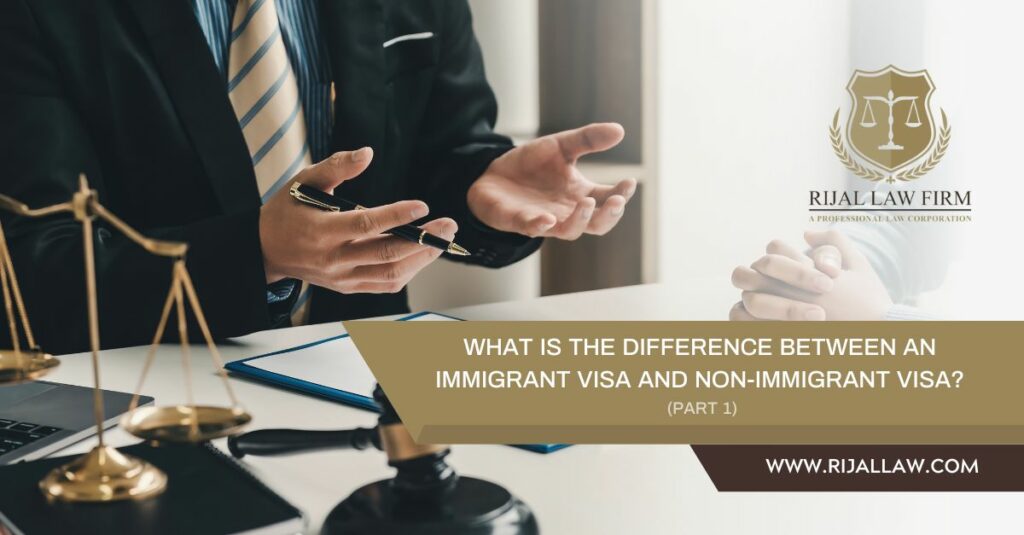Your first step in visiting the U.S. is to obtain a visa. This type of document allows you to travel to the U.S. and apply for a longer stay. However, just because you get a visa does not guarantee admission. That is why you need to consult with a lawyer along the way. When you get to the port of entry, an immigration officer will determine, at that time, your admission eligibility. The National Visa Center (NVC), which operates through the U.S. Department of State, is responsible for collecting visa applications and processing the information. The NVC notifies applicants about the necessary Non-Immigrant Visa visa documents and fees. Once an application is approved, the NVC delivers the records to a U.S. consulate or embassy. The time required for a visa issuance depends on an applicant’s country of origin and the type of visa they’re requesting.
The Non-Immigrant Visa and Immigrant Visa: Defining the Difference
Two types of visas are available for U.S. travel – a non-immigrant visa and an immigrant visa. Non-immigrant visas are issued to people who plan to visit the U.S. temporarily. These individuals may include business people, students, tourists, laborers, or patients who require medical care in the U.S.
Unless you have been approved for a visa waiver (for stays of 3 months or less) or are exempt from getting a visa, you’ll need to obtain a non-immigrant visa for short-term travel in the U.S.
Getting a Permanent Immigrant Visa Allows You to Get a Green Card
An immigrant visa makes it possible for people admitted to the U.S. from another country to seek permanent resident status. If you hold an immigrant visa then, you’ll receive a permanent resident card (called a green card) when you enter the country.
Therefore, lawful permanent residents or LPRs are also green card holders: non-U.S. citizens who can legally live and work in the U.S.
While a green card holder or LPR may retain their natural citizenship and passport, they do not have to become U.S. naturalized citizens.
Therefore, it’s up to you. If you do have a green card, you may, if you want, file an application to become a naturalized citizen of the U.S. You can do this if you live in the country for five years, or after three years, if you’re married to a U.S. citizen.
Getting a Non-Immigrant Visa: What You Need to Know
To get a non-immigrant visa, you need to show you don’t plan to immigrate to the U.S. This is done in one or more of the following ways:
- You’re planning to enter the U.S. for (855) 997-4525medical treatment, for pleasure, or for business.
- You’re planning to spend time in the U.S. for a specific period.
- You have enough money to cover the costs of travel or your stay.
- You have a residence in your native country.
- You have social, economic, and family ties abroad.
Getting a Green Card
To obtain permanent immigrant status, you’ll need to obtain an immigrant visa – a process that is completed in three steps. The process usually starts when a relative or employer files a petition on your behalf.
In turn, the U.S. Citizenship and Immigration Services (USCIS) will approve the petition, provided you have everything filled out correctly. It will then send the document to the National Visa Center (NVC) until an immigrant visa number is issued.
When the number is assigned, you’ll have received green card authorization. Once in the U.S., you can proceed with applying for permanent resident status. Therefore, don’t get a green card confused with an immigrant visa. The two are not the same.
An immigrant visa allows you access to the U.S. to obtain permanent residency. You receive the green card after your arrival.
Therefore, the green card allows you to legally travel, live, and work in the U.S. and therefore represents a type of visa that gives you permanent resident status.
Types of Green Cards
To qualify for a green card, you already need to have an immigrant visa in place. The types of green cards issued are broader than what’s available in visas. They may include the following:
- Family-based green cards allow close relatives of U.S. citizens to get a green card. Immediate family members, such as parents, children, sisters, brothers, widows/widowers of U.S. citizens, or green card holders, may apply.
- Work-based green cards allow people employed in the U.S. to obtain a green card related to their job.
- Humanitarian green card applicants include people who seek asylum or who are refugees or victims of human trafficking. They may also include victims of abuse or a crime who assist U.S. law enforcement in their investigations.
- Green card lottery winners are chosen each year at random from an entry pool. Therefore, 50,000 people are selected from six primary geographic locations, including Oceania, Asia, and Africa. Priority is given to people from countries that do not have large numbers migrating to the U.S. This lottery is also known as the Diversity Visa (DV) Program.

Contact an Immigration Lawyer Today
To ensure your success in applying for and receiving a non-immigrant or immigrant visa, you need to contact an immigration law firm. Contact a professional in the immigration field who knows how to facilitate the process legally and hassle-free. Call the Rijal Law Firm at (855) 997-4525 today.

